The U.S. Army and Navy each feature their own special operations forces, known as the Green Berets and Navy SEALs.
There are some similarities as well as differences between Navy SEALs and Army Green Berets.
In this article, we will examine the two special operations forces to help you make a more well-informed decision on which path you might want to take.
Table of Contents
Fast Facts
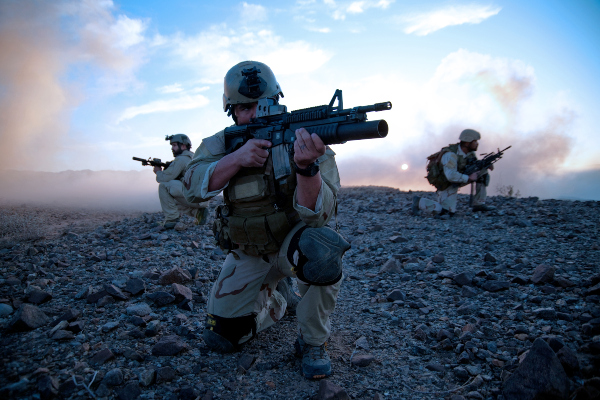
Before we examine the similarities and differences between Green Beret vs. Navy SEALs, let’s go over some of the basics:
| Green Berets | Navy SEALs | |
|---|---|---|
| Established: | June 19, 1952 | January 1, 1962 |
| Size: | 6,700 | 2,450 |
| Motto: | "To Liberate The Oppressed" | "It Pays to be a Winner" "The Only Easy Day Was Yesterday" "Never Out of the Fight" |
| Headquarters: | Fort Liberty, North Carolina | Naval Amphibious Base Coronado, CA Joint Expeditionary Base Little Creek/Fort Story, VA |
| Nicknames: | - "Quiet Professionals" - "Soldier-Diplomats" - "Snake Eaters" - "Bearded Bastards" | - "Frogmen" - "The Teams" - "The Men with Green Faces" |
| Military Role: | - Unconventional Warfare - Foreign Internal Defense - Direct Action - Counter-Insurgency - Special Reconnaissance - Counter-Terrorism - Information Operations - Counterproliferation - Security Force Assistance | - Special Operations - Direct Action - Counter-Terrorism - Special Reconnaissance - Unconventional Warfare |
You can read more about the four major differences between Green Berets and Navy SEALs, below.
It is important to understand the differences between the two special-op divisions, so you know what is best for your future.
Related Article – Green Berets vs. Army Rangers: 5 Major Differences
Difference #1 – Requirements
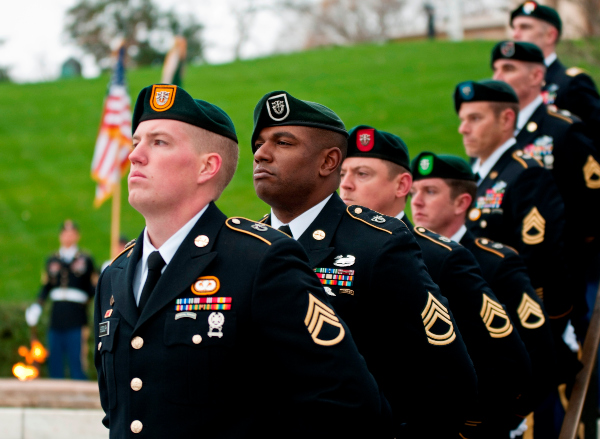
The U.S. Navy and Army both have basic requirements to join each prospective branch.
The basic requirements apply to everyone in the military branch, while other qualifications are specific to the special-ops team.
Due to the nature of their work, special operations are more selective when deciding who can join the elite force.
Therefore, the requirements for joining are not surprisingly more demanding.
Green Beret Requirements
New recruit Army Green Berets need to meet the following qualifications:
- Citizens of the United States
- High school diploma or GED
- Between the ages of 20-32
- ASVAB General Technical score of 110+
- Qualify for airborne training
- Qualify for Secret security clearance
- Meet the Army height and weight standards
- Pass the Defense Language Aptitude Battery or Defense Language Proficiency Test
- Meet the standards of the Physical Fitness Assessment (PFA)
The requirements for those already enlisted are slightly different.
The U.S. Army studies the character and personal conduct of potential Green Berets very closely.
You can expect a detailed investigation by the Department of Defense into your past, including criminal record checks and personal finances.
Related Article – Army APFT Test Standards For Males and Females
Navy SEAL Requirements
Navy SEALs need to meet the following qualifications:
- U.S. citizens
- High school diploma (or GED equivalent)
- Between the ages of 18-28
- A vision of 20/40 and 20/70 minimum correctable to 20/25
- Normal color vision
- Pass the Navy SEAL Physical Screening Test
- Existing members of the U.S. Navy or Coast Guard
- Score a minimum of 220 on the VE+MK+MC+CS portion of the ASVAB, or 170 on the GS+MC+EI, or 110 on the VE+AR, with a minimum of 50 on MC
The U.S. Navy also requires that SEALs demonstrate good moral character.
As a result, the Department of Defense conducts a thorough investigation into your background including a report of any criminal history, credit check, and interviews with references.
Women are now allowed to enlist in the Navy SEALs.
However, as of the time of this article, the first female member had yet to join the special-ops force.
Difference #2 – Training
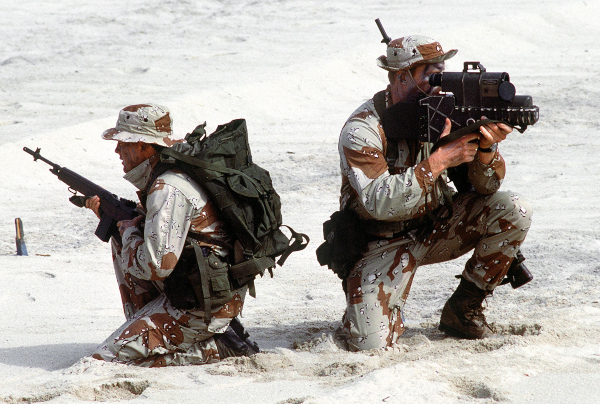
Training for special operations is more demanding than its requirements.
The purpose of making training as intense as possible is to truly get the most elite force possible, as many recruits don’t make the cut each year for special ops.
While Army Green Beret training is extraordinarily demanding, the overall consensus is that Navy SEAL training is the most challenging of any elite ops group in the U.S. Armed Forces.
Green Beret Training
Special Forces Training, or Green Beret training in the U.S. Army, is more intense than what typical service members seeking to join the military branch endure.
There is no mistake about it that Green Beret training is very taxing and takes a special individual to survive.
The struggle to become a Green Beret is real, and not only takes exceptional physical fitness and endurance but also mental fortitude beyond the ordinary.
The U.S. Army recently shortened its Special Forces Training program.
The current program includes a six-week Special Forces preparation course that focuses on physical fitness.
Afterward, you’ll move on to the next phase, the Special Forces Assessment and Selection process. This 24-day test will ensure you’re mentally and physically fit for a life in the Green Berets.
Should you pass, you’ll move on to the Special Forces Qualification Course. This one-year course will teach you what you need to know to operate in the Green Berets.
It includes training in, a foreign language, Survival, Evasion, Resistance, and Escape (SERE), and Special Operations Techniques. The course concludes with a staged invasion of the made-up country, Pineland.
Additionally, here is an interesting excerpt from the book “The Guerrilla Factory: The Making of Special Forces Officers, The Green Berets”.
It provides a first-hand, personal account of what training is like though keep in mind some of the standards may change in the approaching years.
Navy SEAL Training
Navy SEAL training is both revered and feared by new recruits because of its reputation with training.
It is a fair concern when you consider that, on average, only 2 out of every 10 recruits that enter Navy SEAL training actually make it all the way through on the first try.
Given the extremely high dropout rate (80%) most agree that nothing quite compares to the training of a Navy SEAL.
Recruits seeking to become a Navy SEAL spend more than a year at a series of formal training schools before being pinned with the official Special Warfare Insignia, known as the SEAL Trident.
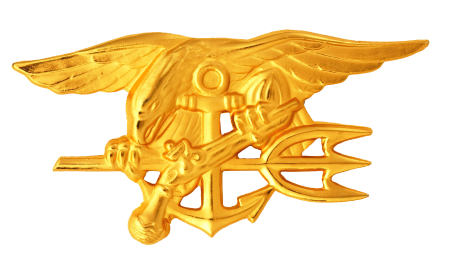
Basic Underwater Demolition/SEAL (BUD/S) School is a notorious portion of Navy SEAL training.
The training lasts a half year and pushes recruits seeking to join the elite force to the absolute limit, and then some.
SEAL Qualification Training (SQT) is another intense program involved in SEAL training and lasts 6 months.
New Navy SEALs are also required to attend and finish Parachute Jump School.
There are a few phases of SEAL training with the purpose of separating the strong from the weak.
SEAL recruits are nearly in constant motion from the time they arrive at training to graduation.
Training involves exhausting physical conditioning, land warfare training, combat diving, underwater demolition, and developing specialized skills.
At the end of the day, only about 250 recruits out of 1,000 candidates will successfully complete Navy SEAL training.
Related Article: DEVGRU: Selection, Squadrons, Gear, Notable Missions, And More
Difference #3 – Mission
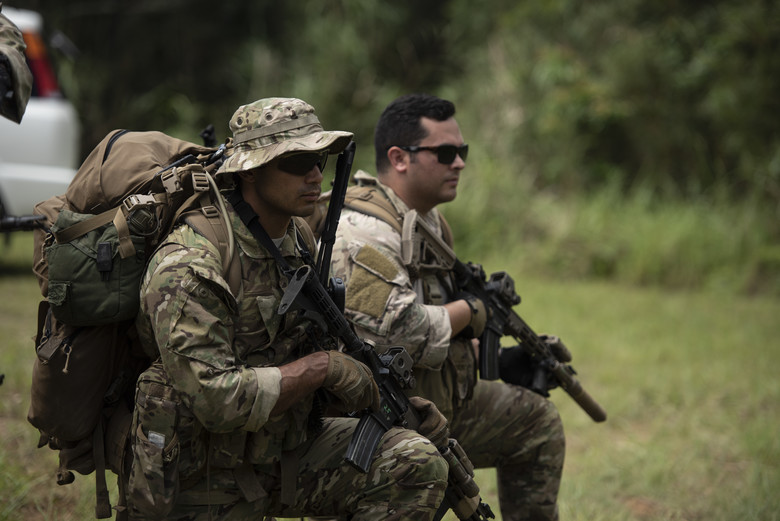
Some people like to speculate as to who is the more revered special operations force.
The fact is both special operations forces are incredibly important to the overall success of the U.S. Armed Forces.
It is impossible to admit one of the military elite forces is more important than the other one.
Army Green Berets and Navy SEALs have some overlapping responsibilities along with a few critical differences.
Green Beret Mission
The principal tasks of a Green Beret include:
- Direct Action
- Unconventional Warfare
- Foreign Internal Defense
- Counter-Insurgency
- Special Reconnaissance
- Counter-Terrorism
- Information Operations
- Counter-Proliferation
- Security Force Assistance
Green Berets are part of the 1st Special Forces Command with headquarters at Fort Liberty in North Carolina.
Elite soldiers become members of seven geographically focused groups.
Two of the groups focus on language, culture, and training skills while working with foreign troops.
Meanwhile, other teams may focus on search and rescue, hostage rescue, counter-narcotics, humanitarian aid, information operations, psychological operations, or manhunts.
Therefore, Green Berets serve a combination of direct combat or reconnaissance work as well as peacekeeping and humanitarian operations.
Regardless of the mission, much of the work performed by Green Berets is classified.
Army Special Forces are not always under the supervision of ground commanders in the region.
Many work and report directly to a geographic combatant command or USSOCOM.
It is also worth mentioning that the CIA recruits from the Green Berets for its Special Activities Division (SAD).
Navy SEAL Mission
The broad overview of a Navy SEAL mission includes duties like:
- Direct Action
- Special Operations
- Counter-Terrorism
- Special Reconnaissance
- Amphibious reconnaissance
- Unconventional Warfare
- Hostage Rescue
- Counter-Proliferation
- Foreign Internal Defense
- Counter Narcotic Operations
- Underwater demolition
The biggest thing that separates Navy SEALs vs. Green Berets is the SEALs particular attention to water-based missions.
Unlike the Green Berets, SEALs are tasked with missions that are along the coasts, as well as estuaries.
The U.S. Navy separates SEALs into 2 groups:
- Naval Special Warfare Group One (West Coast) – SEAL Teams 1, 3, 5, and 7
- Naval Special Warfare Group Two (East Coast) – SEAL Teams 2, 4, 8, and 10
The Naval Special Warfare Command, which is based in Coronado, California, oversees both groups.
Since much of the work of Navy SEALs is highly classified, a few details of its structure are known yet much of the special-ops group remains a mystery unless you are a member.
SEAL teams get deployed around the world often serving out highly classified and dangerous operations.
Navy SEALs are highly trained operators, capable of doing just about everything they are tasked with.
While primarily confidential, verifiable missions of SEALs include the death of Osama bin Laden in 2011.
Difference #4 – History

Army Green Berets and Navy SEALs have similar histories.
Both special forces were developed and created within a decade of each other.
Each elite force has served important roles in all of the major foreign conflicts the US has been involved in, including World War II, Korea, Vietnam, Iraq, and Afghanistan.
Green Beret History
The Army Special Forces (Green Berets) have roots in several special operations units.
For example, Alamo Scouts and First Special Service Force units served during WWII and have a direct link to Green Berets.
The need for a premier unconventional warfare unit helped create the official Green Berets.
The special operations force was officially established in 1952, ten years before Navy SEALs became official under JFK.
A “golden era” of Green Berets is often cited to the Korean War, though Army Special Forces also were instrumental in Vietnam, Cambodia, Laos, Guatemala, El Salvador, and Columbia during points of conflict.
Green Berets also were vital during the first Gulf War, as well as the conflicts in Iraq and Afghanistan.
Navy SEAL History
U.S. Navy SEALs have origins that date back to World War II.
Naval Combat Demolition Units, or NCDUs, were responsible for clearing the beaches of Normandy, Sicily, and Southern France.
Technically speaking, they weren’t called ‘SEALs’ until the Vietnam War in the early-60s.
Navy SEALs were officially recognized in 1962 yet served the U.S. Armed Forces as volunteers since the 1940s.
The original SEALs were known as Underwater Demolition Teams (UDT) and
Naval Combat Demolition Units (NCDUs), before President Kennedy officially established Navy SEALs as a recognizable special ops division.
While UDTs and NCDUs did serve a special role during both fronts of WWII, the special operations force is more linked to Vietnam.
SEAL teams have always been on the front reaching beaches and obstacles to clear the way for additional troops.
However, it wasn’t until Vietnam that the U.S. government began to understand the importance of SEALs and that they served as the best defense against the guerrilla warfare of the Viet Cong.
The herald history of Navy SEALs is not as longstanding as the Marines yet the specialized force remains highly important for its rare ability to fight from the land, sea, and air.
Frequently Asked Questions (FAQ)
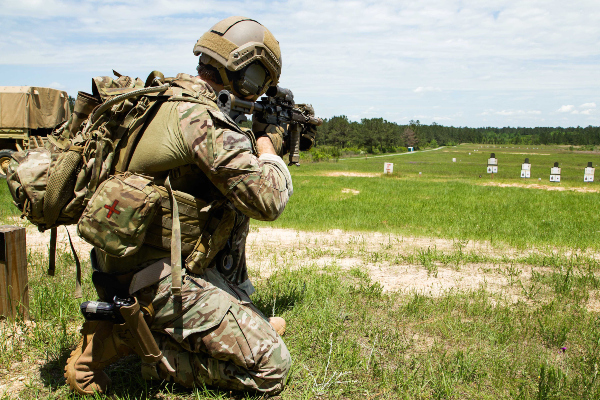
Here are some frequently asked questions about the Green Berets vs. Navy SEALs that we didn’t have a chance to touch on above:
Related Article: 17 Famous Navy SEALs (and 3 Controversial Ones)
Can a Green Beret become a Navy SEAL?
While Navy SEALs and Green Berets are somewhat competing special operations forces, there is some overlap.
In fact, it is not unusual for some Navy SEALs to attend Ranger School as part of their development and training.
However, for the most part, those that join the U.S. Army focus on becoming a Ranger or Green Beret, while those that join the U.S. Navy focus on joining the SEALs or SWCC.
If an Army Green Beret wants to become a SEAL, he’ll have to wait until his contract with the Army is up, and then enlist in the Navy and go through the regular process.
Which special ops force is more elite?
Debating which special operations force is more elite between Green Berets and Navy SEALs is useless.
Both elite forces have pros and cons, as well as carry out extremely sophisticated and confidential missions.
The training is arguably harder for Navy SEALs, yet that is not to suggest that Army Special Forces training is some sort of cakewalk (far from it!).
However, if you make your determination based solely on the attrition rate, Navy SEALs would be characterized as ‘more elite’.
Delta Force vs. Navy SEALs(Opens in a new browser tab)
Regardless, Green Berets are considered more elite and advanced compared to their Army counterpart – Rangers.
Is it harder to qualify as a Green Beret or as a Navy SEAL?
Both elite forces are difficult to qualify for, however, Green Berets need to pass the Defense Language Aptitude Battery, as well as meet other high standards.
What is the dropout rate for Navy SEALs training vs. Army Green Berets?
Approximately 80% to 85% of candidates drop out of Navy SEAL training (BUD/S), whereas only about 60% of Green Beret trainees wash out.
How do I prepare for a career in special ops?
You can begin to prepare for a career by staying in fantastic shape, staying out of trouble, avoiding drugs and alcohol, and maintaining a strong reputation while you serve in the Army or Navy.
There are numerous courses available online that can help you train and prepare for a career in either the Green Berets or SEALs, and it’s out of the scope of this article.
What is the difference between Army Special Forces and Green Berets?
There is no difference – Army Special Forces personnel are called “Green Berets” because of their distinctive headgear.
Can women join the Navy SEALs or Army Green Berets?
As of 2016, women have been permitted to apply to Army Special Forces (Green Berets), with the first female graduate finishing in February 2020. A handful have followed since that date.
The first female Navy SEAL candidate successfully passed training in July 2021, but was recruited as a Special Warfare Combatant Craft Crewman (SWCC), and was not selected to become a Navy SEAL.
Conclusion
Deciding between Green Berets and Navy SEALs is a decision that is not to be taken lightly.
As stated earlier, they are both highly trained and specialized soldiers that are masters of a particular skill.
It all comes down to which requirements, training standards, missions, and reputation aligns more with your goals and what you seek to get out of the military.
Regardless of which path you select joining a special operations force is a thrilling and passionate way to serve your time in the U.S. Armed Forces.
- Ikon Pass Military Discount: Learn How To Save Big - January 31, 2025
- RTIC Military Discount: Find Out How To Save Big on Gear - January 30, 2025
- Traeger Military Discount: Learn How To Save Big on Smokers - January 28, 2025

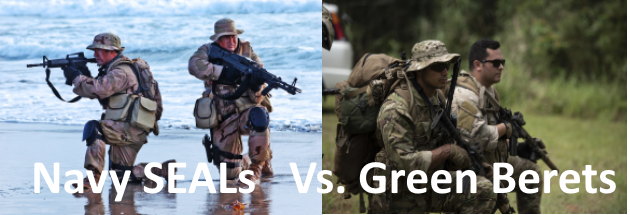




The truth is our training is every bit as hard as what a SEAL goes through. This ignore the political glorification the Navy seems to have a need to place in them. We call ourselves quiet professionals for a reason. No glory, all guys, make history, let the SEALS make movies. And what we do doesn’t make it into the books. SEALS are excellent and yes, we’ve run ops together because placement of teams were optimal for quickest response. But I could never stand the look at me attitude.
You have to admit, though, it makes for a hell of a recruiting tool for the Navy. But I agree with your sentiment, which is why I approved your comment over dozens of others.
Wow! Those are exactly my words when I tell others why I still have respect / more respect for GBs than SEALs.
I love and respect Green Berets because with all the distractions & temptations they have been able to maintain their mystique in this tell all and can’t keep a secret world!
While Navy personnel rather share much too much about SEALs and themselves, it reduces their image, the mystique. It appears that all the self promoting, book deals–seeking fame & praise from the media and public–tarnishes their image.
I recognized while serving in the Air Force that sailors were always comparing the Navy to the Air Force–who’s best, what’s better, and so on. Maybe, it’s just a Navy thing.
“The original SEALs were known as SeaBees ”
Not really. UDT was the forerunner of the SEALs. SeaBees were military and did construction work (building airfields, etc.). As the official SeaBee site says: “The Seabees are construction workers fully trained in defending themselves against enemy attack while building the infrastructure to keep the war effort moving.”
Yes, you’re 100% right. Just got that fixed up, thanks for pointing it out.